The eastern portion of the Edwards Plateau is known as the Texas hill country.
Thin soils littered with rocks of all sizes and underlain with limestone or granite bedrock cover major portions of the Edwards Plateau. The hill country, in particular, is composed of steep hillsides and valleys, which portray some of the state’s most beautiful scenery.
A wide variety of natural vegetation provides grazing or browsing for several animal types, including cattle, sheep, goats and whitetail deer.
As in other Texas ecoregions, many ranches have been owned and managed by multiple generations of the same family. The country is harsh and demanding, plagued with frequent drought.
Often ranches are sold because a family could not earn enough from the land to sustain themselves and the operation. How have the families that still own their ranches survived?
The number one reason is their love for the land and their pride in their heritage. They are willing to make great sacrifices in order to keep title to their property. As families grew, they were able to work together to ensure someone who loved ranching stayed with the operation, allowing other members to pursue different careers of their choice. These family members all agreed the ranch should not be sold.
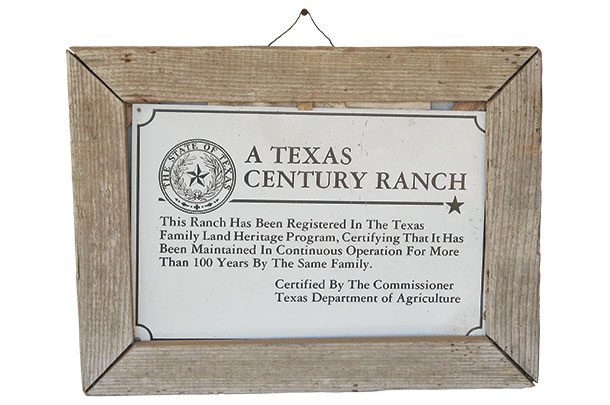
Another very important reason is that these families learned how to take care of the land and avoid overuse. Multi-generation ranches exist because of sound management and the owners’ ability to survive under harsh conditions.
Hillingdon Ranch
Good management and attention to the land are primary reasons the Hillingdon Ranch has been owned by the same family since the 1800s. It was founded by Alfred Giles, who was born in Hillingdon, Middlesex, England. In 1876, Giles established a thriving architectural firm in San Antonio.
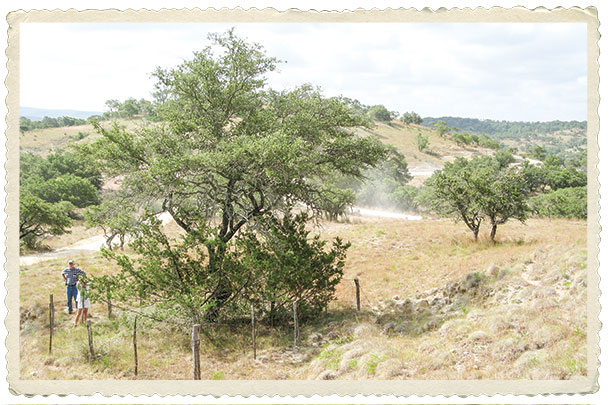
He partnered with his brother-in-law in 1885 and began buying land near Comfort, Texas. Soon, Hillingdon Ranch, named for Giles’ native homeland, consisted of more than 13,000 acres.
Today, 14,000 acres of the Hillingdon estate is owned and operated by Robin Giles (grandson of Alfred Giles); his wife, Carol; their son, Grant; and Grant’s wife, Misty. Grant’s and Misty’s recently born son, Wade, is a fifth-generation Giles on the Hillingdon Ranch.
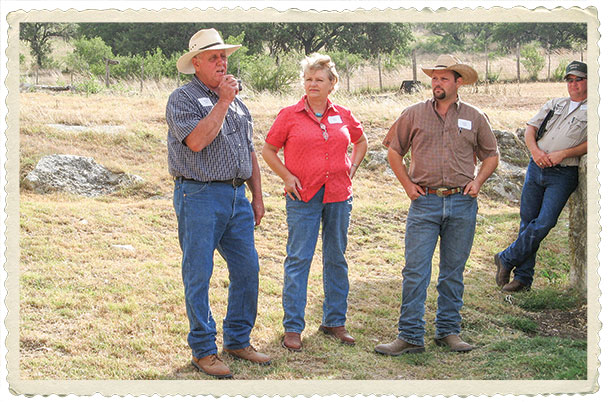
Livestock enterprises include registered Angus cattle, fine-wool sheep and Angora goats.
“Rangeland stockmen are native-plant farmers, and we need to know as much about growing these plants as a farmer knows about growing corn,” says Robin Giles. “One of the primary differences between my family and a corn grower is that we use a limited amount of fertilizer and herbicides.
There are no weeds on this ranch. Weeds are plants out of place, and we do not have any vegetation that is not used. We have an animal that eats every plant.
“We use goats to keep our juniper under control, which opens pastures to sunlight, allowing grass to grow for the cattle. The maximum amount of juniper in a goat’s diet is 17 to 20 percent. The rest of their diet on this ranch is oak, sotol and yucca. A factor in determining the stocking rate of goats is the amount of juniper we need to control."
"Our weeds are eaten by the sheep. Ice weed, sometimes called tobacco weed, is very prolific on the ranch, and the sheep love it. If we didn’t have sheep to control this weed, we would have to buy herbicides – because cattle won’t eat ice weed.”
“By most standards, our cattle are small, with cows averaging about 1,100 pounds,” says Grant Giles. “We believe it is important to have an animal that can live off of the land, and larger cows couldn’t get enough to eat to survive here.”
“We feed a minimum amount of supplement and make the livestock get their nutrient requirements from native plants,” Robin Giles explains. “Our goats and sheep are not fed anything, but the cattle receive approximately 1 pound of a 40 percent protein feed per head for 10 weeks during the winter. Feeding is done one day a week, so each animal gets approximately 7 pounds each time they are fed."
“The cattle are fed only once a week, so they will consume forage the remainder of the week. The supplement contains enough protein to stimulate their ruminant bacteria to digest the dry range grass."
Another reason for feeding once a week is that the week’s supply is large enough to allow the timid cows to get their share before the aggressive animals eat too much.
“When we want to look at our cattle, we bring them to us with a small amount of cubes. That way we don’t have to spend a lot of time riding in the brush looking for them,” Giles continues. “It all comes down to labor."
"Carol, Grant, Misty and I operate Hillingdon Ranch by ourselves except for goat and sheep shearing. We need to save time and labor every way we can. The cattle are always fed in a different part of the pasture, so we get a more even grazing distribution.”
“Our cows calve in late February through early April,” says Grant Giles. “At about 4 months old, the calves are worked which includes vaccinating, eartagging, treating for internal and external parasites and castrating most bull calves. Cows and bulls also receive a round of vaccinations at this time. Calves are weaned beginning in October.”
Mazurek Family Ranch
Nearly every member of the Mazurek family is involved in the livestock industry and represents the fourth and fifth generations. Barbara Mazurek is third-generation owner and operator of two hill country ranches – one on fairly level blackland near Bandera, Texas, that belonged to her father and one nestled deep in the hills near the small town of Utopia.
The Utopia ranch was operated by Mazurek and her husband until his death. At age 79 and with two hip and knee replacements, Mazurek basically runs the two ranches by herself with help from her two sons, daughter and grandchildren.
“Land is our living and our future,” says Mazurek. “I tell my children to hold onto the ranches no matter what sacrifices are required.
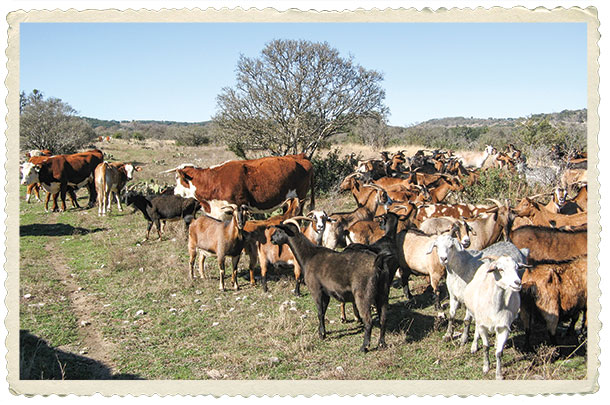
“Our family remains in the ranching business because we have always maintained diversified operations. We raise cattle, sheep and goats, which generate income from several sources and reduce risk."
"Normally mohair, wool and cattle prices don’t go up or down at the same time. So when we break even or lose money on one commodity, we make a profit on the other two."
“The two ranches make a nice operational unit,” Mazurek continues. “We keep our sheep at the Bandera ranch, and the goats are at the Utopia location. We have cattle at both places. I also lease pastures for cattle because the Utopia ranch can’t carry enough cattle for the enterprise to be profitable."
"Cattle will only graze partway up the slopes, which leaves a lot of land they won’t graze. Water-source locations largely determine where cattle graze. They don’t stray far from water. Goats, on the other hand, browse all the way to the top of the hills and then come back down for water.”
Mazurek breeds Charolais and Brangus cattle to crossbred cows during winter so calving will occur the following fall. Heifers are bred so they calve at near 2 years old. Calves are worked at 4 months old and receive treatments that will qualify them for premium prices at auction sales.
Bull calves are castrated, and replacement heifers are branded. All calves are dehorned if necessary and vaccinated for clostridia and respiratory diseases. Mazurek uses eartags and pour-on insecticides for external parasite control and deworms her cattle twice a year. She raises all of her replacement heifers and buys her herd sires from seedstock producers.
Weinheimer Family Ranches
Len Weinheimer, fourth-generation manager of the family ranch at Stonewall, Texas, says, “Our family has retained title to the ranch through determination and hard work. Previous generations survived drought, low commodity prices and tough economic periods.
Today, we can lengthen the list of challenges with competition from imports, land prices, environmental pressures, government regulations and an administration in Washington, D.C. that is crushing small business and agriculture.
“Regardless of the hardships, we maintain pride in our heritage and continue to enjoy ranching. The fifth generation of Weinheimers, my five children, all support and believe in our ranching business, although some of them will pursue other careers."
"The oldest son manages our cattle operation in New Mexico, and other family members will eventually assume an active role.”
Income sources on the ranch at Stonewall include registered Hereford cattle, commercial cattle, wool and hair sheep, meat and mohair goats, and a deer-hunting operation. Breeding stock is sold from each livestock enterprise.
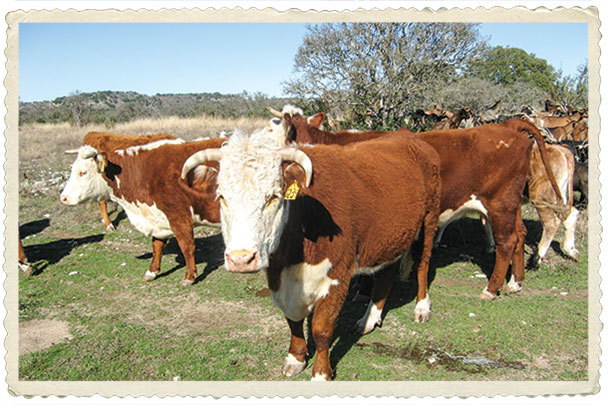
The Herefords are the foundation for F1 crosses, and the type varies with the local market. Angus and Hereford crosses are raised on the New Mexico ranch because “black baldies” can sell for premium prices in that area. On a third ranch in East Texas, Hereford/Brahman crosses are produced because “tiger stripes” are the preferred replacement heifers.
“I precondition almost all my calves regardless of whether they will be herd replacements or feeders,” says Weinheimer. “All cattle are vaccinated for clostridia and respiratory diseases, lepto and vibrio. The clostridia complex will vary depending on disease incidence in that particular area."
"A primary advantage of the preconditioning program is that calves learn to eat feed before they are shipped to a feedlot. Depending upon market conditions, we either hold title to our calves while in a feedlot or sell them through contract to a feeder.
“When on pasture, our livestock are expected to thrive on native vegetation with a protein supplement during the winter. We use rotational grazing and watch our pasture forage supplies very closely to avoid overgrazing or overbrowsing. We pay attention to stocking rates of all animals, including whitetail deer.”
The three described ranches are only a snapshot of multi-generation ranching operations in the Texas Edwards Plateau. Hard-working, innovative families have retained ownership of their land and livestock because of pride in their heritage, enjoyment of ranching, land stewardship and diversification. These people are the backbone of not only Texas, but the entire nation. ![]()
Robert Fears is a freelance writer based in Texas.
PHOTO 1: Mazurek Family Ranch headquarters nestled among the hills near Utopia, Texas.
PHOTO 2: The Weinheimer Family Ranch at Stonewall, Texas, has been designated as a century-old ranch by the Texas Historical Commission.
PHOTO 3: Robin Giles’ daddy fenced a plot of typical hillside vegetation to use as a comparison to grazed areas to help measure forage consumption. The plot continues to be used.
PHOTO 4: Robin, Carol and Grant Giles conducting a field day for the Texas Section of the Society of Range Management.
PHOTO 5: Hereford cattle and Spanish goats graze together very efficiently.
PHOTO 6: Herefords are the foundation of the Weinheimer Family Ranch cattle enterprises. Photos by Robert Fears.







